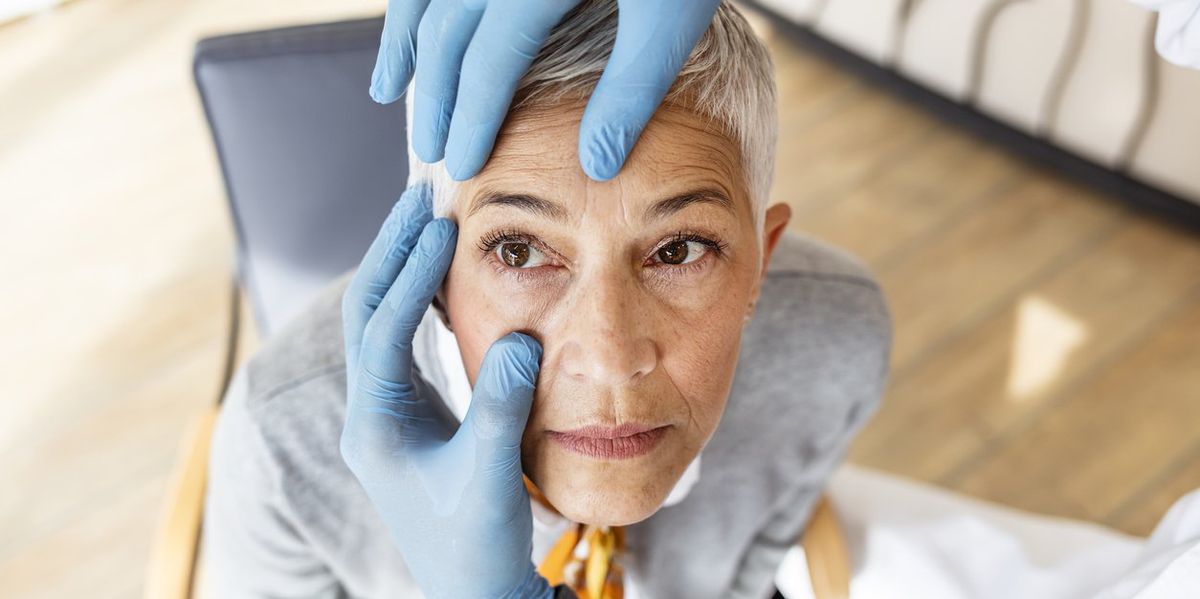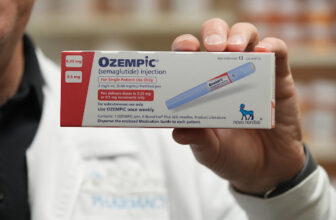
[adinserter block=”3″]
Hindsight is 20/20 but maintaining good vision is a common concern as we age — especially for women. In fact, 2 out of 3 people affected by blindness are women. Since women live longer than men, we’re at a higher risk for vision problems. And one of the biggest threats to healthy vision is glaucoma, known as the “silent thief of sight.”
Fortunately, glaucoma is treatable. Traditionally, the first line of treatment has been eye drops, . But there is a growing movement toward “interventional glaucoma.” This method takes a more proactive approach to diagnosis and management of glaucoma and favors earlier surgical intervention.
What is glaucoma?
Glaucoma is the second-leading cause of blindness worldwide. It occurs when there’s an imbalance of fluid in the eye. In a healthy eye, there’s a delicate balance of fluid production and drainage. However, when that balance is lost, eye pressure from built-up fluid can increase and damage the optic nerve. The damage can eventually cause blindness
Who’s at risk for glaucoma?
Open-angle glaucoma is the most common type of glaucoma that happens slowly over time. And it is more common in Black and Latinx populations. Black people diagnosed with glaucoma are six times more likely to experience advanced vision loss than white people. This is largely because of unequal access to healthcare coverage, education, treatment and not being represented in research. For example, Black people are consistently underrepresented in clinical trials for glaucoma, despite the fact that the Black community is at high risk for the condition.
Closed-angle glaucoma is a type of glaucoma that can be painful and needs urgent care. While women have a higher risk for closed-angle glaucoma, it’s not common: only 1 out of 10 people with glaucoma have the closed-angle type. Some research shows that hormones may play a part in how eye diseases, including glaucoma, progress.
It’s important we make caring for our own vision a high priority, because early diagnosis and prompt treatment are key to preventing vision loss.
Setting targets for treatment
Vision loss because of glaucoma can happen so gradually that you may not notice for a long time. Only about half of the people who have glaucoma are aware that they do.
But once the damage is done, it cannot be reversed.
“Not enough people get eye exams, and even if they’re getting checked for glasses, they may not get a complete eye exam,” said Mona Kaleem M.D., associate professor of ophthalmology at Wilmer Eye Institute, Johns Hopkins Medicine and host of Diagnosis Glaucoma podcast.
If your eyes are healthy and your vision is good, you should have a complete eye exam once in your twenties, twice in your thirties, and then every year or two after you turn 40, depending on what your HCP recommends. And if you have “a history of eye conditions, get screened and get a complete eye exam annually, especially starting around age 40.”
Once glaucoma is diagnosed, managing eye pressure becomes the goal. “Whenever we’re treating glaucoma, we set a target eye pressure,” Kaleem said. “We look at maximum eye pressure at your testing, and we set the target. The treatments we recommend are based on getting you [down] to that target number.”
There are different treatment protocols for the different types of glaucoma. Eye drops and other medications may be used for people with closed-angle glaucoma, but laser treatment is the main treatment. And acute closed-angle glaucoma is a medical emergency, so surgery must be performed as soon as possible. For open-angle glaucoma, medication in the form of eye drops is the most common treatment and people often respond well to them.
Where standard treatments fail
Eye drops as treatment seems ideal: simple, noninvasive and accessible. But it’s hard for people to follow the treatment plan. In fact, as many as 8 out of 10 people don’t follow their plan properly. “Adherence is a very big problem,” Kaleem said. “People forget to use their medications. They have side effects. There are all kinds of problems with eye drops.”
Why is it so tough to stick with eye drops? People often do not understand the dangers of missed treatment. And it can be difficult for some people, even painful, to administer drops. Plus, glaucoma mostly affects the senior population who may have other health issues that can reduce their ability to care for themselves or keep up with treatments.
Side effects are a problem, too.
It’s a known issue that the preservatives in many eye drops can cause ocular surface disease (OSD). “Usually the preservatives, but sometimes the chemicals and actual medications, can cause problems,” Kaleem said. Managing both glaucoma and OSD can get quite complicated — fast. Having OSD may cause problems with glaucoma surgery outcomes, and OSD symptoms may become more severe after glaucoma surgery. People with OSD also have higher rates of failure and complications after invasive glaucoma surgery compared to people who do not have OSD. While using preservative-free drops might help, those prescriptions are often too expensive for people to afford and may not get rid of symptoms.
An effective alternative with minimally invasive glaucoma surgery (MIGS)
According to Kaleem, setting a treatment course is a partnership between the healthcare provider and patient. The best treatment depends on the patient.
Laser trabeculoplasty lowers the pressure in the eye and may be a good option for many people with glaucoma. But the benefits from the procedure decrease over time and you may still need topical medication, such as eye drops, afterward.
Typically, doctors manage glaucoma with medication and laser treatment before turning to surgery. Patients are often nervous about having surgery on their eyes, and it’s natural for people to want to delay surgery if possible. But a new type of minimally invasive glaucoma surgery (MIGS) might resolve these fears and lead to better outcomes. And many MIGS patients may be able to reduce or cease eye drops after the procedure (at the discretion of their eye care professional).
“We have many options for treatment, like minimally invasive glaucoma surgery. It’s the first line in surgery these days,” Kaleem said. “I do a lot of MIGS.”
All types of glaucoma surgery have a common goal: to prevent damage to the eye by reducing eye pressure. Traditional surgery is limited to two choices: a trabeculoplasty, which creates a new pathway for fluid to drain, or the insertion of a drainage device. Research shows that both options work well, but are also quite involved. Both procedures are associated with complications, have a long recovery time and require long-term follow-up. “There are more incisions and the healing is longer,” Kaleem said. “With minimally invasive surgeries, the downtime is very little.”
MIGS accomplishes the same goal of lowering eye pressure by making it possible for more eye fluid to flow out of the eye. This is done by using a tiny device to add support to the “natural plumbing” that’s already in the eye, but isn’t working well enough. In some cases, a MIGS procedure may lower eye pressure by using a laser on the part of the eye that produces fluid.
For many people with glaucoma, MIGS is a safe, effective treatment choice. The devices used in MIGS procedures have been used in more than 1 million eyes and studied for more than 20 years, and the procedures have a high safety profile. Post-op studies show that almost 9 out of 10 patients are satisfied with the outcome, and 8 out of 10 have an improved quality of life following the MIGS procedure. MIGS can also often be performed at the same time as cataract surgery, reducing the number of surgeries many people need.
However, MIGS procedures are limited in how much they can lower eye pressure in patients. “The minimally invasive surgery is good for someone with open-angle who needs around a 20% pressure reduction,” Kaleem said. “The traditional surgery is needed for someone with more advanced disease, who needs a greater reduction in eye pressure.”
To catch glaucoma in time to be eligible for MIGS, or any other advancements that come along in glaucoma treatment, it’s important to get diagnosed early. That’s why it’s important to have regular eye exams. Women are so quick to see where care is needed for others, but we must also keep a close eye on our own vision health.
This resource was created with support from Glaukos.
PM-US-1583
From Your Site Articles
Related Articles Around the Web
[adinserter block=”3″]
Credit : Source Post






